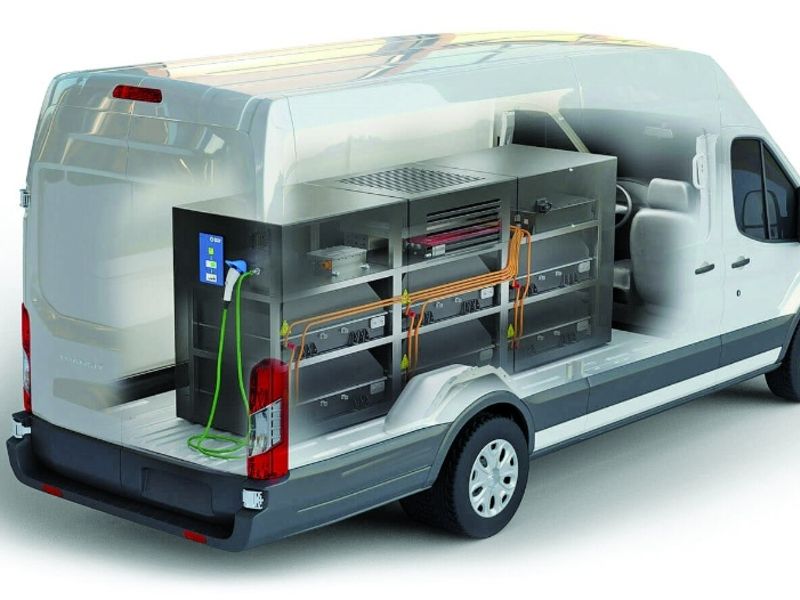
The days of carrying a red gallon gasoline jug down the highway are numbered. But the need for roadside refueling will not go away even as the world shifts to electric vehicles, which is why a new generation of mobile EV chargers is arriving.
The closest experience to the old-school red jug is likely Blink Charging Co.’s portable emergency EV charger. The Miami Beach, Fla., company introduced the mobile unit in 2020. It’s basically a gasoline generator with a 25- foot, 240-volt AC charging cord attached. It offers charging at up to 9.6 kilowatts, enough to put up to a mile of charge into a stranded EV each minute, Blink says.
The charger, called the IQ 200-M, weighs about 350 pounds and holds up to 10.9 gallons of gasoline. Roadside assistance providers are the target buyers for the $6,500 units.
Lightning eMotors, of Loveland, Colo., is targeting commercial EV fleets with its 3,700-pound mobile charging station, called Lightning Mobile, which is available either as a converted truck or a trailer unit. Lightning Mobile includes a battery with a capacity of 184 kilowatt-hours.
The unit’s fast charger uses a Combined Charging System connector to recharge a stalled EV at up to 80 kilowatts. All of that power comes with a price, though. The system costs $232,900, plus about $8,000 to put it onto a trailer or the cost of whichever utility van a company would like to use.
So far, only one Lightning Mobile charging vehicle has been built: a demo used for supplementary charging at a site in New York City where there’s not currently sufficient charging infrastructure installed.
Nick Bettis, Lightning’s director of marketing and sales operations, said the company is in talks with potential customers for orders that would amount to over 100 units. “We will build them as orders come in,” he said.
Roadside fleet vehicle charging is not the only way Lightning Mobile could be used, Bettis said. Aside from supplementing local infrastructure, as in New York, the unit could be a mobile charging bank to store lower-cost off-peak power and then charge EVs during peak times. Or the system could sit in a corner and charge itself at Level 2 all day, then rapidly charge work vehicles as needed.
“Additionally, we get a great deal of interest from companies with very specific uses cases,” Bettis said. “For example, one prospect is interested in using this in his rental car company and would go from hotel to hotel overnight to top off his customers’ EVs. In another case, a major lake resort needs to charge electric speedboats, and putting a stationary charger on every dock is not an option.”
At least one group has tried and ended a solution to roadside EV charging. In 2010, AAA started a mobile EV charging truck program. The project used five prototype vehicles that were deployed in the markets with the highest EV populations at the time: Los Angeles; San Francisco; Seattle; Portland, Ore.; and Orlando. All the trucks have since been retired, said Greg Brannon, director of automotive engineering and industry relations for AAA, but the lessons influence how the association deals with stranded EVs today.
“We learned that while EV range anxiety is an issue for many potential buyers, the reality is that very few will ever find themselves completely out of charge,” he said.
Armed with this knowledge, Brannon said AAA believes there is still a need for roadside EV charging, but that sometimes the best option is to just tow the vehicle to a charging station or the owner’s home.
“We have found that EV owners are keenly aware of range and don’t have the same level of anxiety that non-EV owners do,” Brannon said. “However, AAA knows that people may find themselves in an unexpected situation, and it is our mission to provide the quickest and safest solution for our members.”

